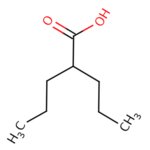Chemistry

What's the difference between Rye and Bourbon? Is it the grains? (Rye vs corn). According to chemist Thomas Collins at the University of California at Davis the answer is no. The answer is in the wood of the barrels used to age the whiskey. Go here: http://www.npr.org/blogs/thesalt/2013/09/09/220655227/rye-bother-an-ins…To complicate matters further Rye and Bourbons made at the same distillery had flavor profiles which resemble each other more than to other Ryes and Bourbons.

Cilantro, a favorite ingredient in spicy cuisine, may also be an inexpensive new way of purifying drinking water, according to research done by undergraduate students at Ivy Tech Community College.
Douglas Schauer, Ph.D., reporting on the work at the American Chemical Society meeting, said that cilantro, also known as coriander and Thai parsley, shows promise as a "biosorbent" for removing lead and other potentially toxic heavy metals from contaminated water.
Conventional methods for removing heavy metals from water such as treatment with activated carbon (used in the filters in home…

Nootkatone, the substance behind the citrus flavor and aroma of grapefruit that is already used in beverages and prestige perfumes, may be heading for a new use in battling mosquitoes, ticks and other pests thanks to a less expensive way of making large amounts of the once rare and pricey ingredient.
Nootkatone previously had to be harvested from tons of grapefruit and is an excellent example of the potential for developing new pesticides based on natural sources. Nootkatone is a component of the oil in grapefruit, and has been on the U.S. Food and Drug Administration's list of substances…

Attila E. Pavlath, Ph.D., who turned fresh-cut apple slices into a popular convenience food, outlined advances in keeping other foods fresh, flavorful and safe for longer periods of time through the use of invisible, colorless, odorless, tasteless coatings.
Pavlath and his group invented the technology that enabled schoolchildren and other consumers to enjoy a new apple treat — refrigerated, packaged apple slices that last 2-3 weeks without turning brown or losing crispness. Apples ordinarily begin to turn brown within 30 minutes after cutting or peeling. Pavlath's process involves treating…
Kopi Luwak, coffee made from berries extracted the feces of Asian palm civet (Paradoxurus hermaphroditus), is all the rage. At our neighborhood Labor Day party we had not only that in attendance, but moonshine too (1), so you know it is trendy. We're thought leaders when it comes to drinks.
It's often called the world's most expensive coffee. Even hotels in downtown Tokyo don't charge so much. The problem is that there is no standard methodology to know if you are getting actual cat poop coffee. As the business has grown, so has concern about fraud. What people with First World Problems…

A new hard metal recently developed can be used to replace tungsten carbide (WC), the hard metal widely used in industry today and whose global availability is becoming critical.
The new material, developed over the past three years by Finnish-based Exote Ltd and the VTT Technical Research Centre of Finland, also possesses excellent bullet-proofing qualities. Ballistic tests have show it has an un-equalled ability to stop armor-piercing bullets.
The hard metal is known as WC Co contains tungsten carbide (WC) and cobalt (co), both of which are defined by the EU as critical…

Human identity revolves around names and making a name for oneself is a lifetime goal for many. Chemicals are no different - many have become an integral part of human culture and some are upcoming stars. Chemicals not only have names like humans do, but some may also look like them [Figure 1] or resemble some part of our lives - for example, Buckminsterfullerene resembles a football [Figure 2] while Olympicene was inspired by Olympic rings [Figure 3]. In fact unusual chemical names, makes chemistry an exciting area of research, and an interesting subject to learn.
Figure 1 :…

ine making (and drinking) has long been more art than science, a subjective experience. But that is changing. In the future, you will be able to find a type of wine you like and have it consistently - all determined by science.
Unlocking the chemical processes that create a wine's aroma is the objective of scientists who recently sequenced the genome of the high-value Tannat grape, from which "the most healthy of red wines" are fermented.
Tannat is the "national grape" of Uruguay, South America's 4th-largest wine producer with 21,000 acres of vineyards. More than a third of the grapes…

How do you find a new element, like the recently discovered superheavy chemical element 115?
Elements beyond atomic number 104 are referred to as superheavy elements and are produced at accelerator laboratories and generally decay after a short time. Initial reports about an element with atomic number 115 were released from a research center in Russia in 2004 but their indirect evidence was insufficient for an official discovery.
The latest group was able to present a way to directly identify new superheavy elements by taking a sample of the exotic element americium and depositing a layer on…

An international team at the GSI research facility in Germany have confirmed the existence of a new element with atomic number 115, verifying earlier measurements performed by research groups in Russia.
By bombarding a thin film of americium with calcium ions, the research team was able to measure photons in connection with the new element's alpha decay. Certain energies of the photons agreed with the expected energies for X-ray radiation, which is a 'fingerprint' of a given element.
The new super-heavy element has yet to be named. A committee comprising members of the international unions of…